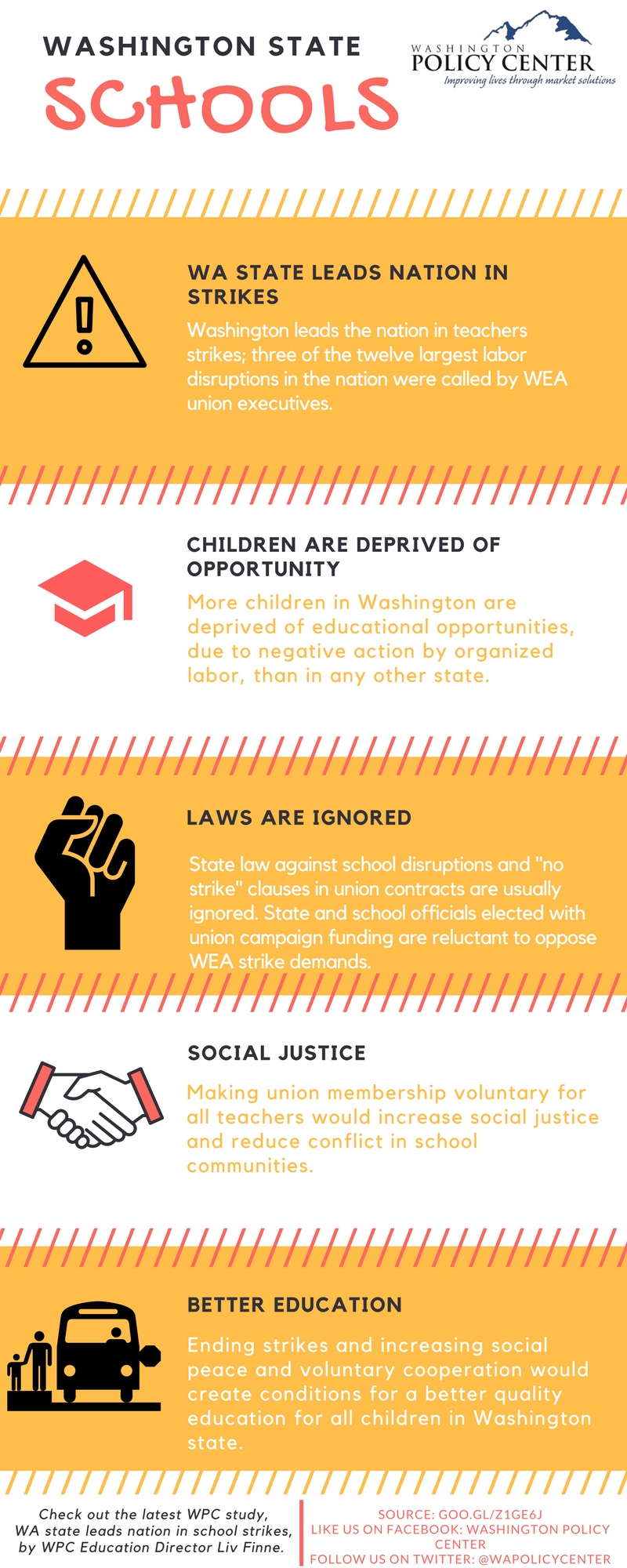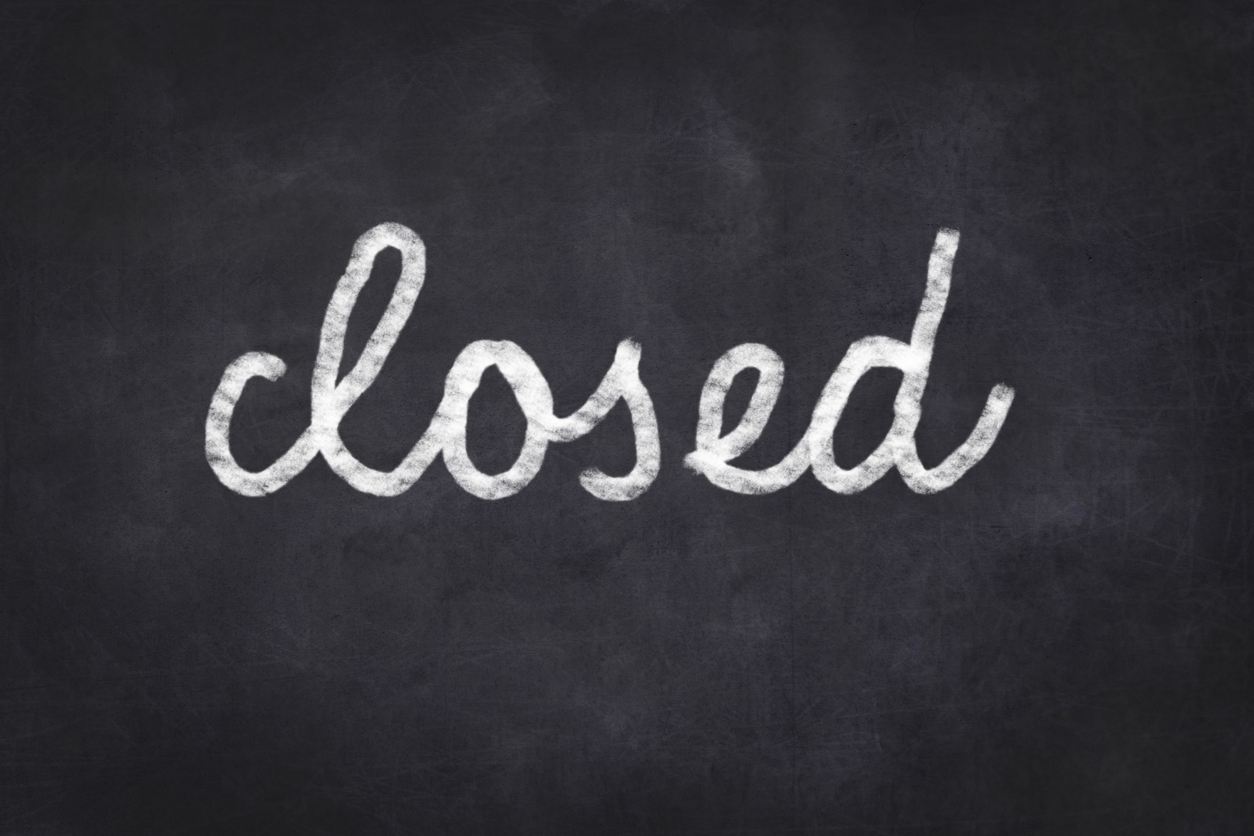Washington state leads the nation in school strikes, according to federal reports
Federal data shows a child in Washington is more likely to face school closures and reduced educational opportunities through union action than children in any other state.
![]() Download the Full Legislative Memo
Download the Full Legislative Memo
Scroll down for an image explanation
Key Findings
1. Washington state leads the nation in teachers strikes; three of the twelve largest labor disruptions in the nation were called by WEA union executives.
2. More children in Washington are deprived of educational opportunities, due to negative action by organized labor, than in any other state.
3. State law against school disruptions and “no strike” clauses in union contracts are usually ignored.
4. State and school officials elected with union campaign funding are reluctant to oppose WEA strike demands.
5. Making union membership voluntary for all teachers would increase social justice and reduce conflict in school communities.
6. Ending strikes and increasing social peace and voluntary cooperation would create conditions for a better quality education for all children in Washington state.
Introduction
Recent data reported by the U.S. Bureau of Labor Statistics shows Washington state leads the nation in teachers strikes, and that more children in Washington are deprived of educational opportunities due to the negative impacts of organized labor than in any other state. Union-led strikes that close schools to children are a recurring and disruptive feature of public education in Washington state. Each school year, often on short notice, one or more large school districts are threatened by executives at the WEA union with a teachers strike.
Washington is not a right-to-work state, and almost every public school teacher is required to join the WEA and pay union executives roughly $1,000 in dues and other fees each year. Unions require that teachers pay these dues and fees or be fired. The funds are taken from public school budgets under accounts devoted to teacher salaries and benefits. Under the arrangement, union executives draw about $34 million in public education money annually.
In 2015, three of the twelve largest labor disruptions in the nation were school closures called by WEA executives in Washington state.[1] No other state had teachers strikes involving more than 1,000 workers in 2015. The only other comparable public sector strike in 2015 occurred in Sonoma County, California, involving 3,800 employees represented by the SEIU union.

[1] “Table 2, Work stoppages involving 1,000 or more workers beginning in 2015,” Economic News Release, Bureau of Labor Statistics, U. S. Department of Labor, at www.bls.gov/news.release/wkstp.t02.htm.






